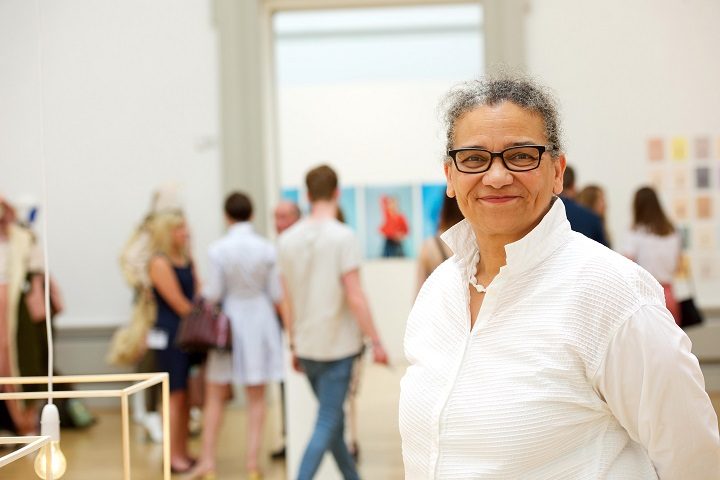Slave trade artist wins the Turner Prize 2017

Lubaina Hamid was announced as the winner of the Turner Prize 2017 last night (5th December 2017) in Hull, making her the first black woman artist to have won the accolade. She fought off competition from Hurvin Anderson, Andrea Büttner and Rosalind Nashashibi to clinch the prize. The 63-year-old Zanzibar-born, Preston-based artist won the £25,000 prize for work addressing racial politics and the legacy of slavery. Described by The Daily Telegraph as "the under-appreciated hero of black British art", Himid made her name in the 1980s as one of the leaders of the British black arts movement - both painting and curating exhibitions of similarly overlooked artists.
About Lubaina Himid
Lubaina Himid was born in 1954 in Zanzibar, Tanzania. She studied Theatre Design at Wimbledon College of Art and an M.A in Cultural History at the Royal College of Art. She is Professor of Contemporary Art at the University of Central Lancashire. Recent solo exhibitions include Navigation Charts, Spike Island, Bristol, UK and Invisible Strategies, Modern Art Oxford, Oxford, UK (both 2017).
Recent group exhibitions include The Place is Here, Nottingham Contemporary, Nottingham, UK (2017); The 1980s Today’s Beginnings?, Van Abbe Museum, Eindhoven, Netherlands (2016); Keywords, Tate Liverpool, UK (2014); and Burning Down the House, Gwangju Biennale, South Korea (2014). From 1986–1990 Himid was director of the Elbow Room and has curated exhibitions including Carte de Visite, Hollybush Gardens, London, UK (2015); The Thin Black Line, ICA, London, UK (1986); and Critical, Donald Rodney, Rochdale Art Gallery, Rochdale, UK (1989).
Slave Industry and its legacies
Himid makes paintings, prints, drawings and installations which celebrate Black creativity and the people of the African diaspora while challenging institutional invisibility. She references the slave industry and its legacies, and addresses the hidden and neglected cultural contribution made by real but forgotten people. In Naming the Money 2014, 100 cut-out life size figures depict Black servants and labourers who Himid individualises, giving each of them a name and story to work against the sense of the powerless mass. She often takes her paintings off the gallery wall so that her images become objects that surround the viewer. Whether working on Guardian newspapers or directly onto porcelain tableware, Himid continually subjects painting to the material of everyday life in order to explore Black identity.
Himid repeatedly questions the historical role of portraiture, as in works such as A Fashionable Marriage 1987, recently exhibited in The Place is Here at Nottingham Contemporary (2017). Inspired by William Hogarth’s Marriage a la Mode 4 (The Countess’s Morning Levee) 1743, this installation features a brightly coloured stage set with a cast of characters taken from Hogarth’s morality tale. Incorporating painting, drawing and collage on cut-outs, the installation relates its historical inspiration to our current climate by including contemporary newspaper headlines and images of Margaret Thatcher and Ronald Reagan. Himid’s satirical approach takes aim at the politics of the time as well as its legacy today. In works such as these, the artist appropriates and interrogates European painters and combines aspects of her African heritage to question the role of visual power.
Alongside her artistic practice Himid has curated exhibitions to showcase underrepresented Black artists. As an artist, advocate and curator she has facilitated and celebrated the role of Black artists and their contributions to contemporary society.
Lubaina Himid is 63 and lives and works in Preston.
About the Turner Prize
The Turner Prize is an annual prize presented to a British visual artist, organised by the Tate Gallery. Named after the painter J. M. W. Turner, it was first presented in 1984, and is one of the United Kingdom's most prestigious, but controversial, art awards. The winner is chosen by a panel of four independent judges invited by the Tate and chaired by the director of Tate Britain. The prize is accompanied by a monetary award of £25,000.
The work of this year's shortlisted artists is on show at the Ferens Art Gallery in Hull until 7 January 2018.




